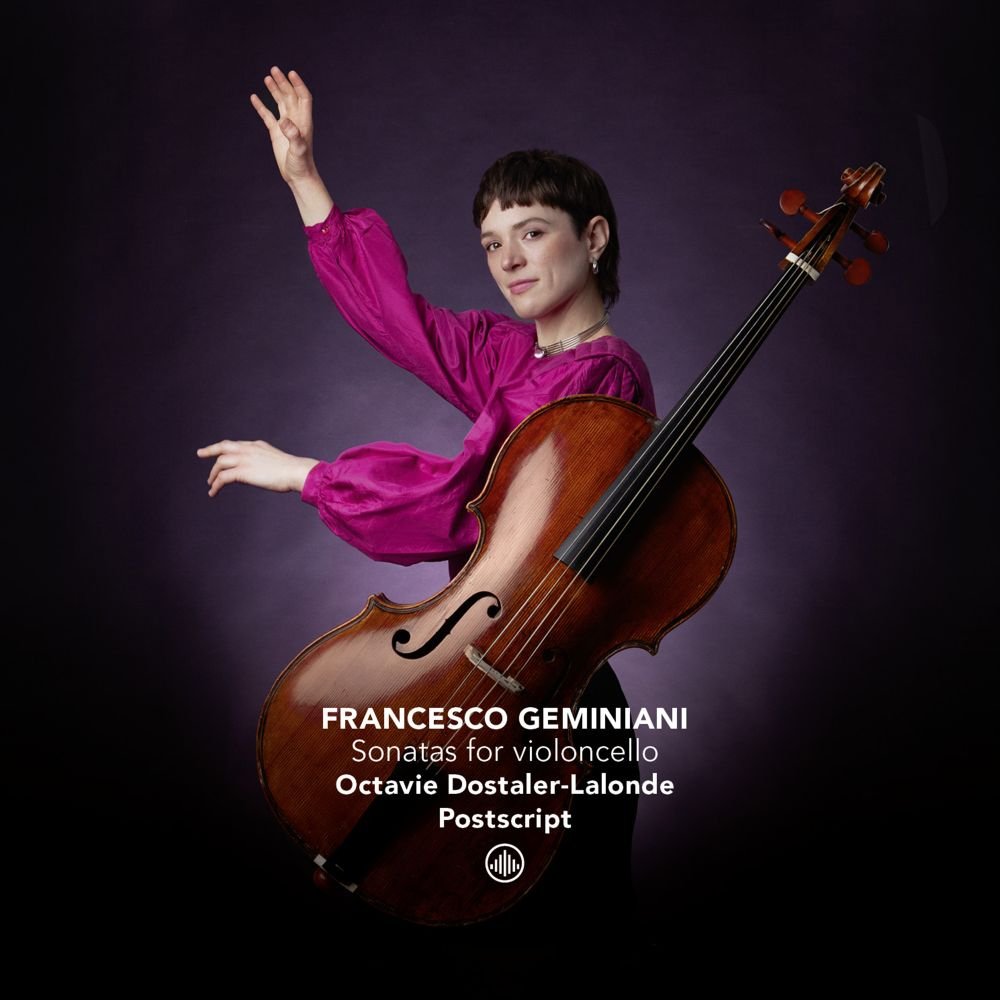Francesco Geminiani: Sonatas for Violoncello
Octavie Dostaler-Lalonde, cello & Postscript
What first intrigued me about Geminiani as a musical figure was his propensity for unpredictable, asymmetrical and improvisatory style—both as a composer and as a performer. If his tempo rubato was apparently too wild for the Neapolitan musicians, his performances were greatly admired for their elegance and taste in England. My everlasting fascination with tempo rubato and the art of “reading between the lines” in terms of tempo, flexibility and rhythmic variations have led me to approach Geminiani’s music with this angle in mind. Moreover, during the recording sessions, many musical aspects—such as ornamentation, continuo realization, and dynamics—were intentionally left to the musicians’ extemporaneous decisions. We used the diversity of colors found in the various instruments forming the continuo group (harpsichord, cello, cello piccolo, violone, theorbo) to create different textures for each movement. Almost like in jazz, each instrument is given its moment to come to the foreground and emerge from the sound of the group.
Octavie Dostaler-Lalonde
“...the interpretations are extremely alert, souding beautifully characterised and natural, using an imaginative variety of different timbres to realise the continuo line. A mesmerisingly beautiful transcription of a Sonata for two Violins, here delivered on two piccolo cellos, is an absolute winner.”
BBC Music Magazine, 2024
à Amsterdam
The idea to dedicate an album to music from Amsterdam, where Postscript was formed, had been on our minds for some time, but it really came into focus with the beginning of the 2020 COVID-19 pandemic. We were isolating at our respective homes in Amsterdam; however, on the rare occasions that music- making was possible, we were able to do it together, since we formed a small enough group to gather safely. The hectic travel schedules that normally shaped our lives came to a halt, and we had the opportunity to spend more time in our home city, enjoying contemplative walks in the eerily now-quiet streets. It was, therefore, quite natural to keep the theme of local exploration and to base our next musical project around the city of Amsterdam, by rediscovering a part of its history that is underappreciated by both musicians and audiences today.
We selected a number of works published (and in most cases also composed) in Amsterdam, chose Amsterdam-built instruments or copies thereof for each of us to play, and settled on a historical venue with wonderful acoustics in the heart of the city: the Waalse Kerk. As with our first CD for TRPTK, Introductio, we decided to record it live with an appreciative audience in attendance. Our hope with this recording is to take you back to 18th-century Amsterdam to get a glimpse of its diverse and lively musical life.
Live videos from Waalse Kerk
More videos coming soon…
Introductio
This is an album of music from the Galant era, a term that covers a whole world of sins and rather than try to describe it, we’ve found some of our favourite examples and decided to present them to you here. This is our introduction of both Postscript and the music of the Galant period, and with Telemann as the central theme, we’ve chosen composers who complement, match or contrast with his style. You’ll hear his work throughout the programme, from the dark, ominous Largo of the Quartet that starts the performance to the more dance-like or lyrical pieces that follow.


